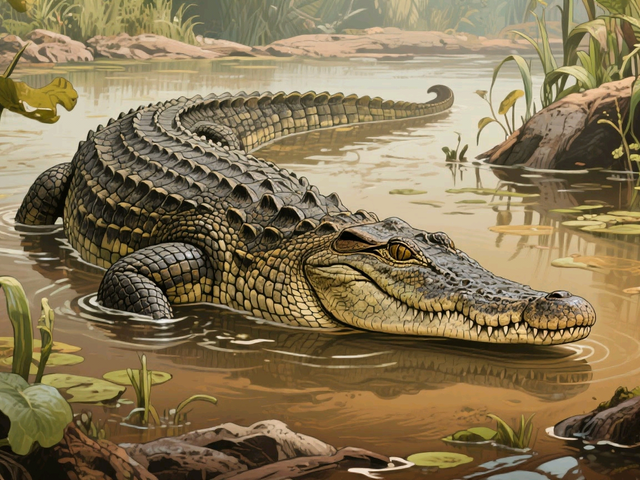Crocodile Evolution

Crocodiles have evolved for 200 million years — why have they changed so little?"
**Summary **:
Calling crocodiles "living fossils" is not an accident: their body plan is extremely efficient for swamp niches, and from many bizarre early forms only those best suited for ambush life in freshwater wetlands survived. This is not about refusing to evolve, but about evolution finding a solution that needed only fine-tuning.(html comment removed: more)
Crocodiles have evolved for 200 million years — why have they changed so little?
Crocodiles are among Earth's long-lived survivors: they made it from the age of dinosaurs to the present day. There are over twenty living crocodile species today (with a few exceptions like the gharial), most of which share the familiar “croc face.” Many people wonder — after hundreds of millions of years, why do crocodiles look almost unchanged?
Early diversity → only swamp-adapted “winners” remained
Early crocodyliforms were morphologically diverse: some ran on land, some swam in the open sea, some had tusk-like teeth or duck-like snouts, and some were even herbivorous. But after several major environmental shifts and ecological competitions, many specialized forms went extinct. The lineages that remained were those best adapted to freshwater swamps and an ambush lifestyle.
“Almost unchanged” is not failure — it’s success
- An efficient body plan: A streamlined body, powerful tail, tough armor and hooked teeth make a highly efficient ambush machine in the water–land interface. When a combination of body and behavior already maximizes survival payoff, selective pressure to change is weak.
- Slow evolutionary rate: Studies show crocodilians have a generally slow rate of morphological evolution — not because evolution stopped, but because there was little pressure pushing them to change. When the environment and ecological niche are stable, maintaining the status quo is often more advantageous than risky change.
Some physiological and ecological details that keep crocodiles resilient
- Cardiac and energy regulation: Crocodilians can route blood flow in special ways to conserve energy during dives and speed digestion after feeding, improving energy efficiency.
- Temperature-dependent sex determination (TSD): Crocodile embryos’ sex is influenced by incubation temperature — an ecological lever that affects population sex ratios and may help buffer populations under changing conditions.
- Survivorship through extreme events: Crocodyliform lineages survived multiple mass-extinction events (including the end-Cretaceous), showing high lineage persistence and resilience.
Be careful with the term “living fossil”
Calling crocodiles “living fossils” conveys their long-term morphological similarity, but scientists warn this can obscure the evolutionary changes occurring at behavioral, ecological, and genetic levels. In other words, modern crocodilians continue to make small adjustments on top of a robust design rather than remaining utterly frozen.
Summarize
Crocodiles aren’t “lazy evolvers”; they found an almost unbeatable survival recipe for swamp life and stuck with it — when the niche is stable, conservatism is often the most efficient evolutionary strategy.
you like this article, please like, forward and follow me @funge for more interesting works